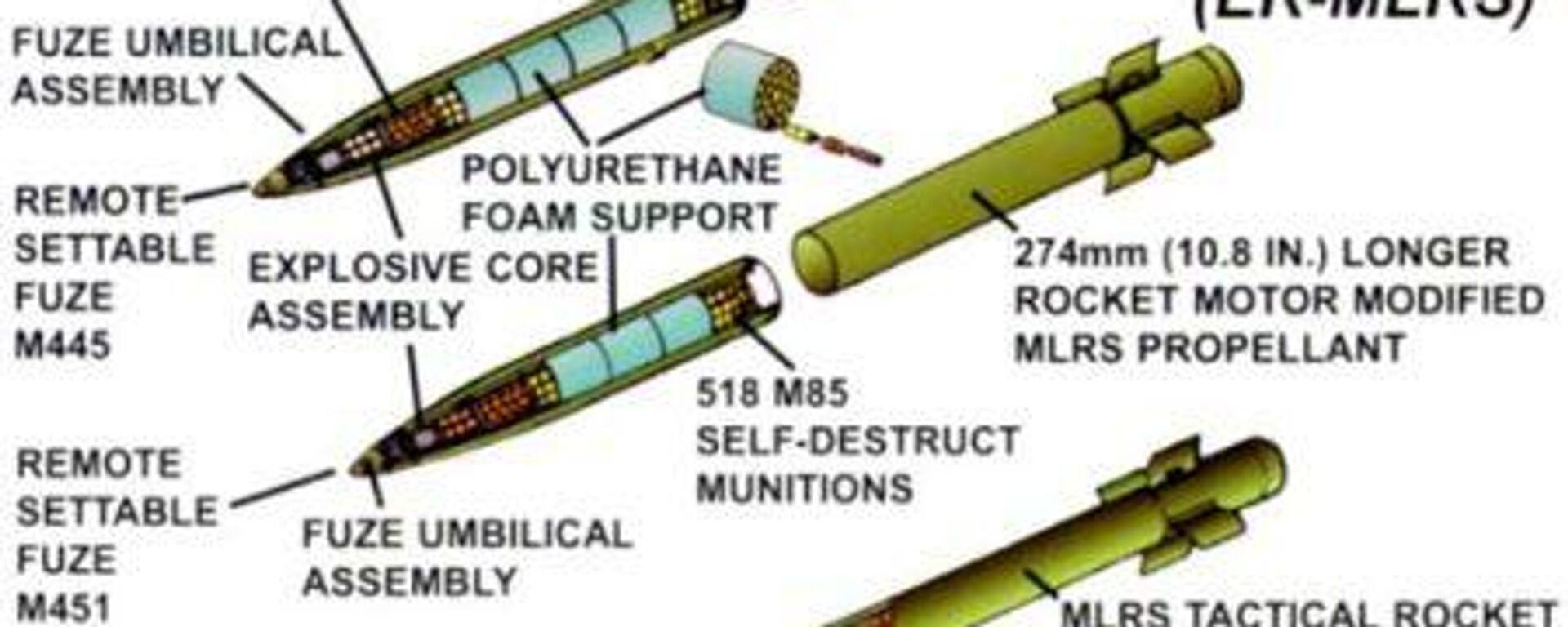Challenger to HIMARS and ATACMS: Meet Belarusian-Made Polonez-M MLRS
14:07 GMT 22.11.2023 (Updated: 16:08 GMT 22.11.2023)
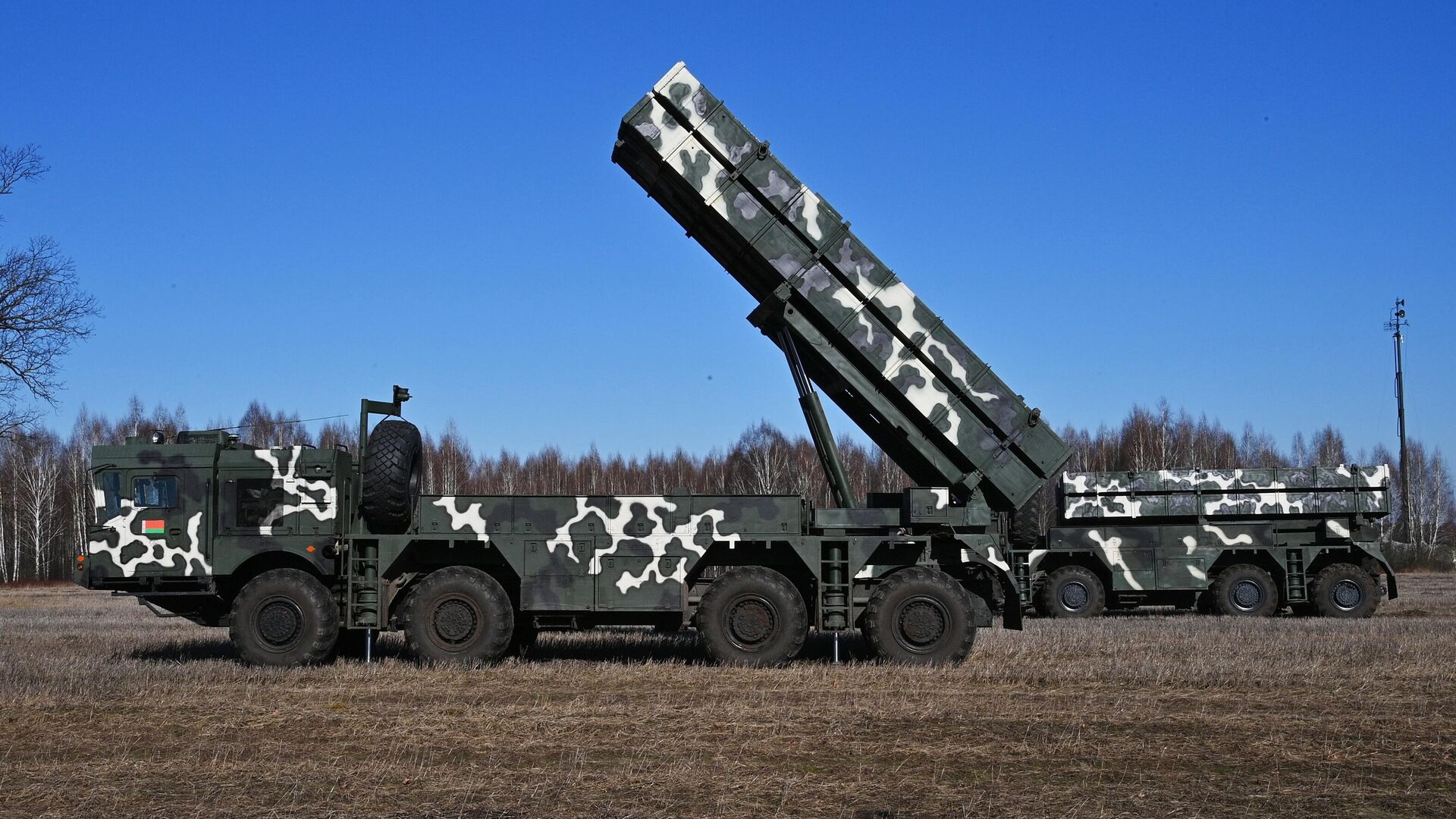
© Sputnik / Viktor Tolochko
/ Subscribe
The Belarusian Army’s 336th Rocket Artillery Brigade took delivery of its first batch of upgraded Polonez-M multiple-launch rocket systems (MLRS) last week, with the system’s firepower and impressive range characteristics sparking direct comparisons with America’s HIMARS and ATACMS platforms. Here’s everything we know about the Polonez.
Unveiled at a Victory Day parade in Minsk on May 9, 2015 and introduced into service with Belarus’s Armed Forces a year later, the Polonez is a unique, Belarusian-made multiple-launch rocket system designed for precision strikes against accumulations of enemy manpower vehicles and armor, command posts, ammunition depots, airfields, etc.
Developed by Belarus' Precise Electro-Mechanics Plant, a state defense concern specializing, among other things, in research into and development and production of modern rocket artillery and ammunition, the Polonez MLRS fires 301 mm caliber rockets, and can engage up to eight targets simultaneously across an area up to 400 square kilometers.
Polonez’s rockets are guided by an inertial navigation system with satellite correction, and have a 200 km effective firing range for the base model, and up to 300 km for the upgraded Polonez-M. The rockets are 7.26 meters long and weigh 750 kg at launch, and feature a 140 kg high explosive/high-explosive fragmentation warhead.
After launch, the rockets’ spent solid propellant rocket engines drop off, with warheads descending onto their targets at speeds of 700 meters per second at angles up to 80 degrees in the terminal stage, with their high speed, combined with a small reflective surface, making them extremely difficult to intercept by air and missile defense systems.
The Polonez’s rockets have a factory circular error probable (CEP) rating of between 30 and 45 meters when fired at maximum range, although testing in 2016 showed accuracy between 1.5 and 10 meters. The base Polonez’s minimum firing range is 50 km, and 120 km for the Polonez-M.
Polonez launchers ride on the Minsk Wheel Tractor Plant-made MZKT-7930 8x8 heavy high mobility chassis, modifications of which are also used to carry an array of Russian missile platforms, from the Iskander missile system and Bal coastal defense system to the Uragan 1M MLRS, radars, bridgelayers and other support equipment. The trucks have a top speed of up to 70 km per hour on the highway, and a range of up to 1,000 km.
Polonez launchers carry eight rockets apiece, and their entire salvo can be fired off in 50 seconds flat. The launchers can be prepared for launch in under two minutes, with the system as a whole taking eight minutes to prepare. Reloading takes 20 minutes, and is made possible using crane-equipped transport-reloader vehicles.
A single Polonez or Polonez-M battery consists of two launchers, two transport-loaders and a mobile control module based on a Minsk Automotive Plant (MAZ) truck chassis. The system includes a Belarusian-made protected communications, automation and data transmission interface. Fire control systems include a satellite uplink and onboard computer for inputting launch coordinates (either automatically or in manual mode).
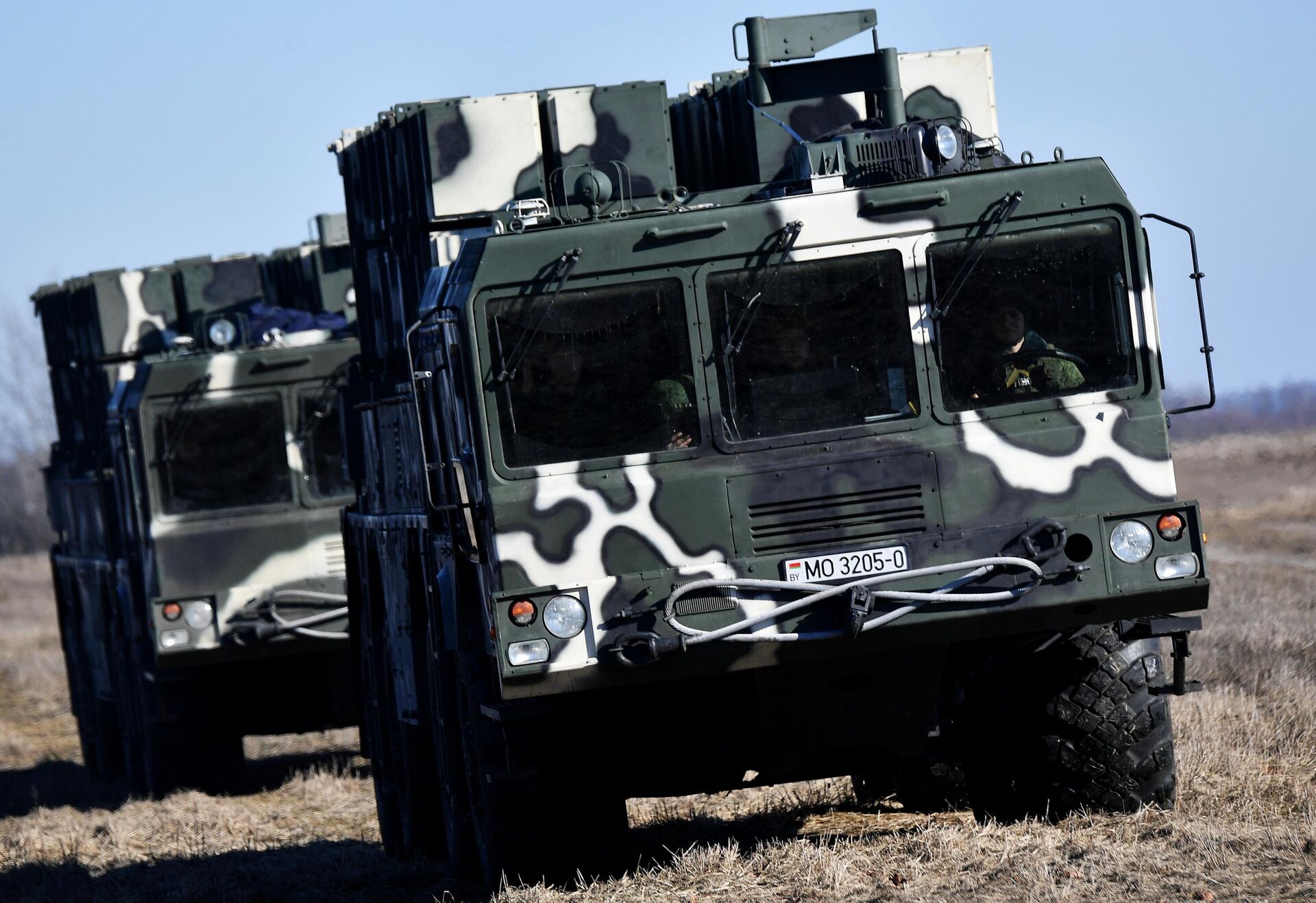
Polonez multiple launch rocket system takes part in the joint military drills between Belarus and Russia at the territory of a former air polygon Polesskiy in Gomel region, Belarus
© Sputnik / Viktor Tolochko
/ Did Belarus Build Polonez by Themselves?
Given the Polonez’s impressive combat characteristics, Russian and foreign observers alike have speculated that Belarus may have received help in the developing the system’s rockets from China. Belarusian officials say the MLRS is homegrown, but have confirmed its testing in China prior to introduction into service. Minsk first aspired to create its own mobile precision rocket artillery system in the mid-2010s, citing reported hesitancy from Moscow at the time in providing Belarus Russian-made MLRS systems.
Belarus and China have had a long, fruitful history of partnering up on the development of mobile missile launch platforms going back to the 1990s, with the Minsk Wheel Tractor Plant building the chassis for China’s CJ-10 cruise missile and DF-11 ballistic missile systems.
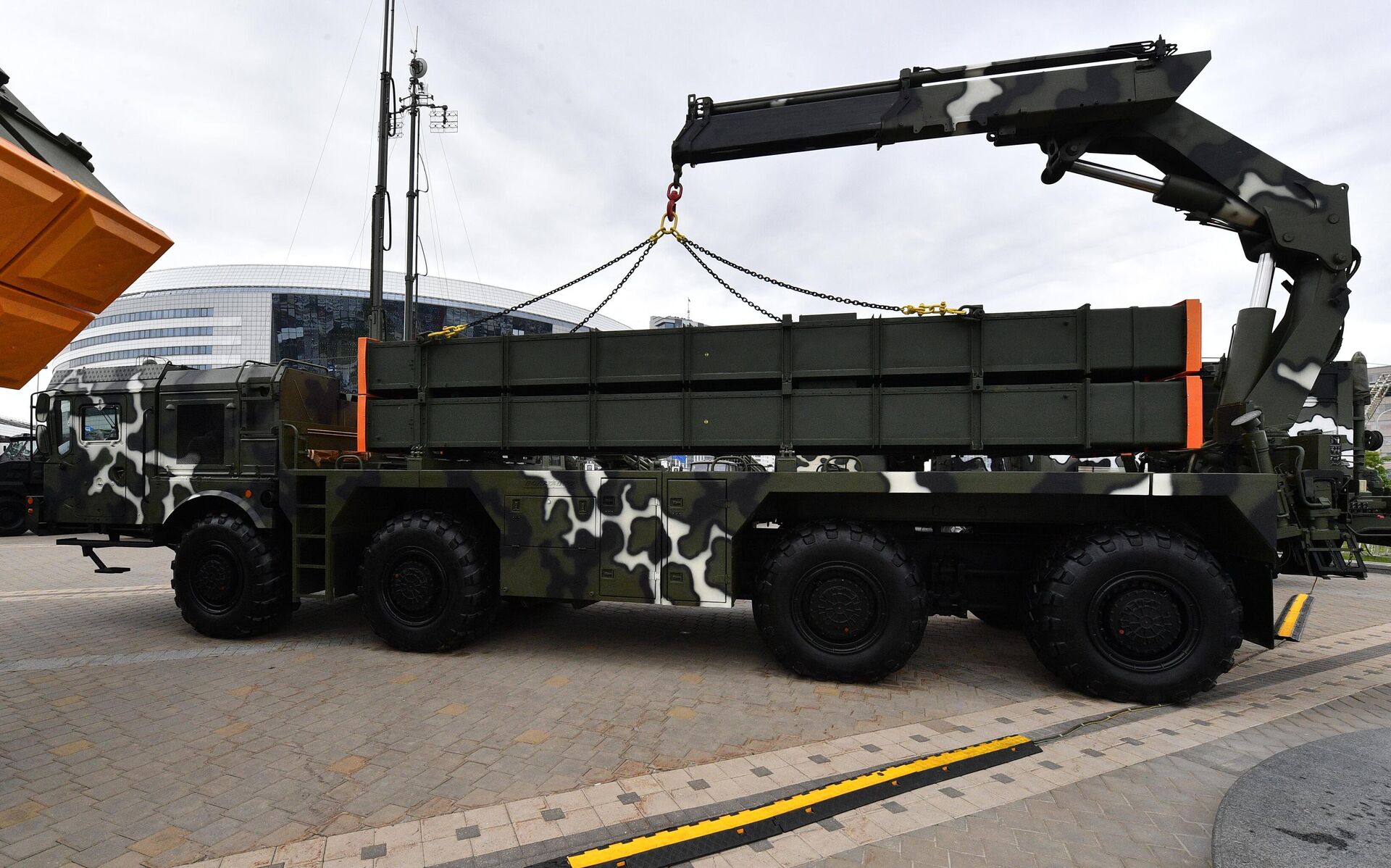
A Polonez transporter-loader vehicle at the MILEX-2023 military expo in Minsk, May 2023.
© Sputnik / Viktor Tolochko
/ Could Russia Get Polonez?
Along with Belarus, Polonez MLRS is operated by the Azerbaijani military. Media reports last year speculated that Russia might be interested in getting the Belarusian-made MLRS for itself. However, Russian Federal Service for Military-Technical Cooperation director Dmitry Shugaev squashed these rumors in a press conference with reporters in August, indicating that “at the moment,” Moscow “is not interested in purchasing the Polonez MLRS.”
Russian analogues to the Polonez include the Tornado-S, a precision MLRS platform that can fire twelve GLONASS-assisted 300 mm rockets with 243 kg warheads up to 120 km. For longer-range strikes, Russia has the Iskander, a short-range ballistic missile system introduced in 2006 with an operational range of between 400 and 500 km and two solid-propellant single-stage guided missiles.
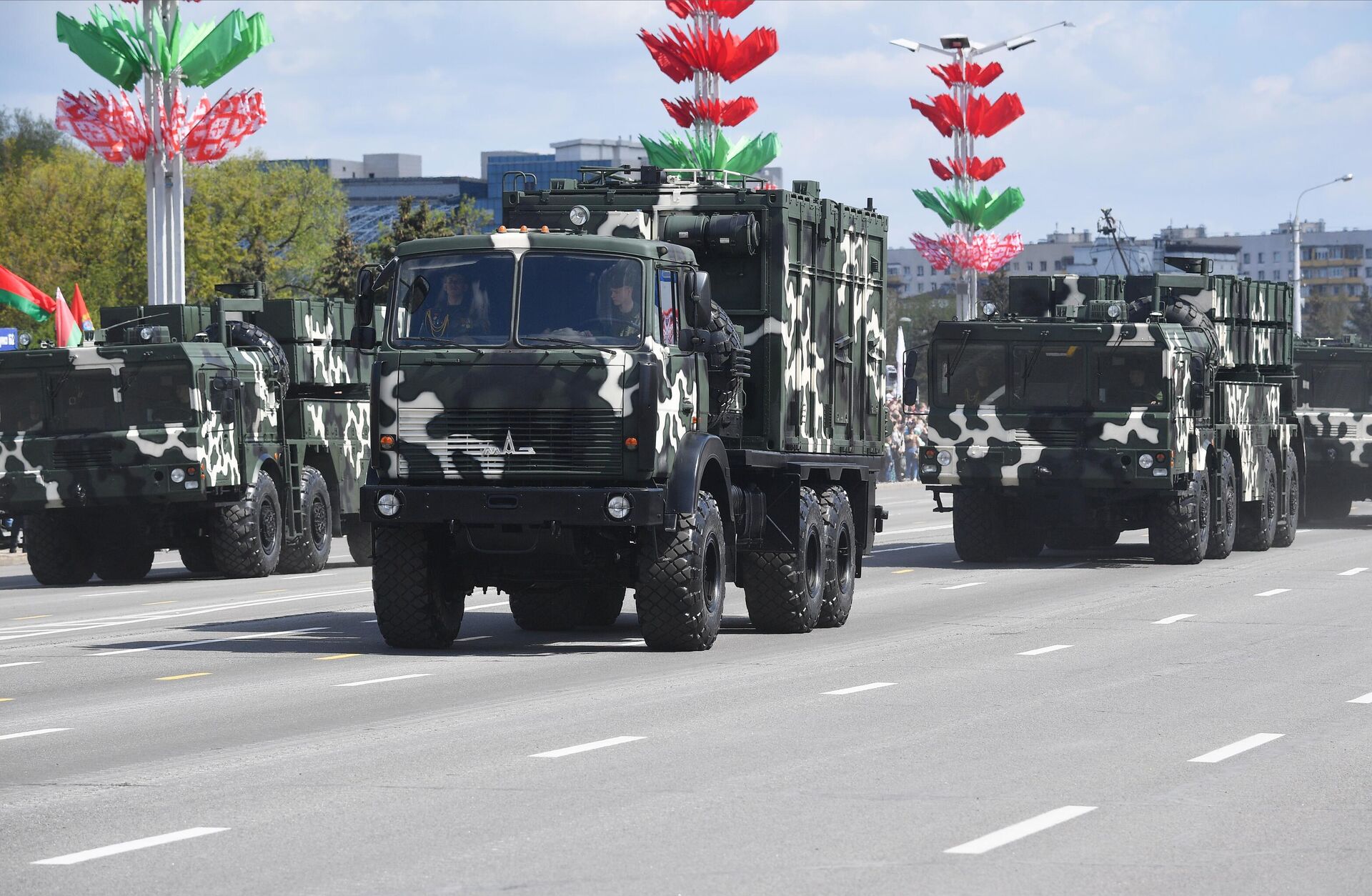
Polonez mobile control module (foreground) and launchers (background) take part in a military parade in Minsk on May 9, 2020.
© Sputnik / Viktor Tolochko
/ How Does Polonez Stack Up Against NATO's Best MLRS?
But media analyses on the Polonez’s characteristics are comparing it not to Russian, but US-made equipment, specifically the M142 High Mobility Artillery Rocket System (HIMARS), which can fire up to six rockets with 91 kg warheads up to 80 km, or a single MGM-140 Army tactical Missile System (ATACMS) 160-560 kg warhead up to 300 km.
“The Polonez-M is widely considered the most capable rocket artillery system in Europe, and has no near-peer rivals among systems fielded by either NATO member states or by Russia,” Military Watch Magazine wrote in an analysis published this week titled “Europe’s Most Dangerous Rocket Artillery System: China Delivers New Polonez-M Ordnance to Belarus,” which leaned into the system’s alleged China connection.
Commenting on the Polonez-M’s capabilities last week, Russian military analyst Andrei Frolov told media that its rockets’ “characteristics are better than HIMARs and comparable to ATACMS missiles,” and are “probably even more accurate and modern.”

